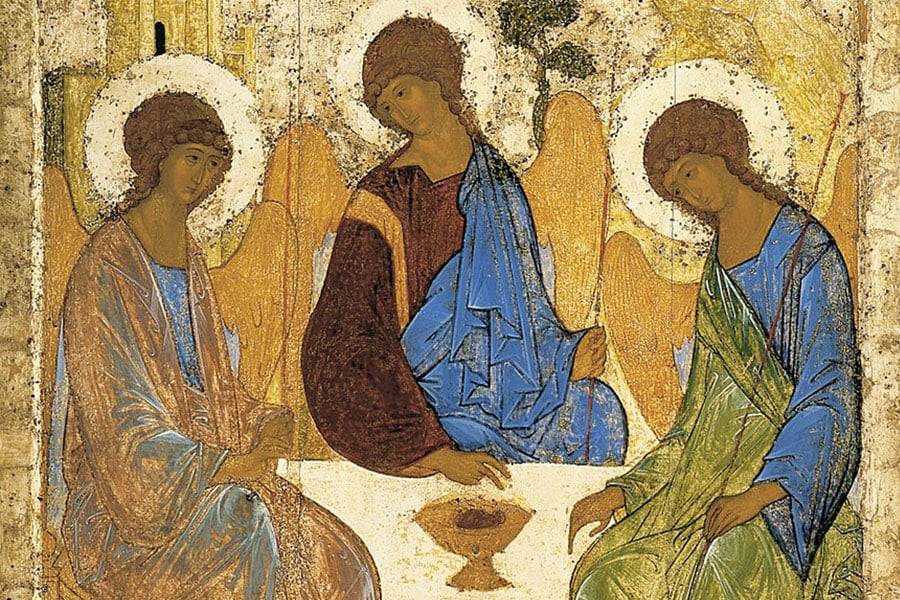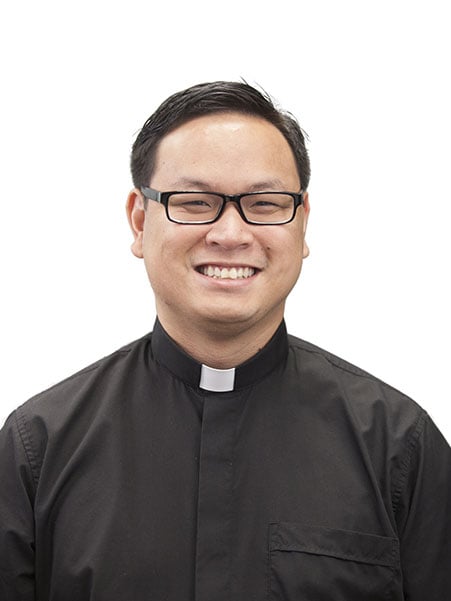An Icon of Love: a meditation on the Holy Trinity

“The Trinity” by Andrei Rublev (1425-27)
“A picture is worth a thousand words.” This simple saying helps me appreciate the efforts of those who prayerfully draw wonderful icons that we can enjoy.
One icon that I am very fond of is “ The Trinity” made by Andrei Rublev. Looking at the icon has made me think of many symbolic imageries, most of which are in the context of the Lord’s Supper as the representation of God’s love for us. The first image that come to mind when I look at the icon is the circle represented by the table. The three angels are the Holy Trinity, who make up the circle, and based on their sitting position they also form a triangle. The next image I want to focus on is the Lord’s Supper; this is represented at the center of the table, through the cup which has a face peering out, which to me represents the Holy Eucharist. His love for us in His incarnation is a total self-gift.
This icon led me to meditate on John 13:31-35, the new and last commandment to the Apostles. Jesus said, “I say it to you. I give you a new commandment: love one another. As I have loved you, so you also should love one another. This is how all will know that you are my disciples, if you have love for one another.”
Pope Benedict XVI during his Angelus address on the Solemnity of the Most Holy Trinity, June 7, 2009, called God “Love.” He said, “Three Persons who are one God because the Father is love; the Son is love; the Spirit is love. God is wholly and only love, the purest, infinite and eternal love. He does not live in splendid solitude, but rather is inexhaustible source of life that is ceaselessly given and communicated.”

Pope Benedict reminds us that God is love and that it is because of His love that we can be. The icon shows this love by the way the figures look at each other. Both Christ and the Holy Spirit are looking at the Father and, in turn, the Father looks back at them.
This love that they have for one another is what simply represents God: love. God communicates this love with us by giving us His only begotten Son. But in return, God receives this love back by the commandment Christ gave to us, thus creating a constant and unending cycle. “Love one another as I have loved you.” God gives us the example of this perfect cycle of love by entering humanity and by doing so He gives His Holy Spirit to us as well.
The Holy Eucharist is how we remember God’s continual love for us by remembering first that God the Father has been present in the affairs of men — always watching, always loving us.
Second, the role that Jesus undertook for us was that He emptied Himself and took the form of man, and then showed us how to love each other as God loves us. He shows us how to do this by giving His life for us on the cross.
And lastly, by the continual work of the Holy Spirit, we can remember Jesus’ life, death, and resurrection by the Holy Sacrifice of the Mass so that we continue to remember God’s continual love for us and His people.
I hope my reflection on prayers before an icon will help those who are seeking to find another method of prayer, especially during this time of Lent, when we are called to draw closer to the Lord by prayer, fasting, and almsgiving.
